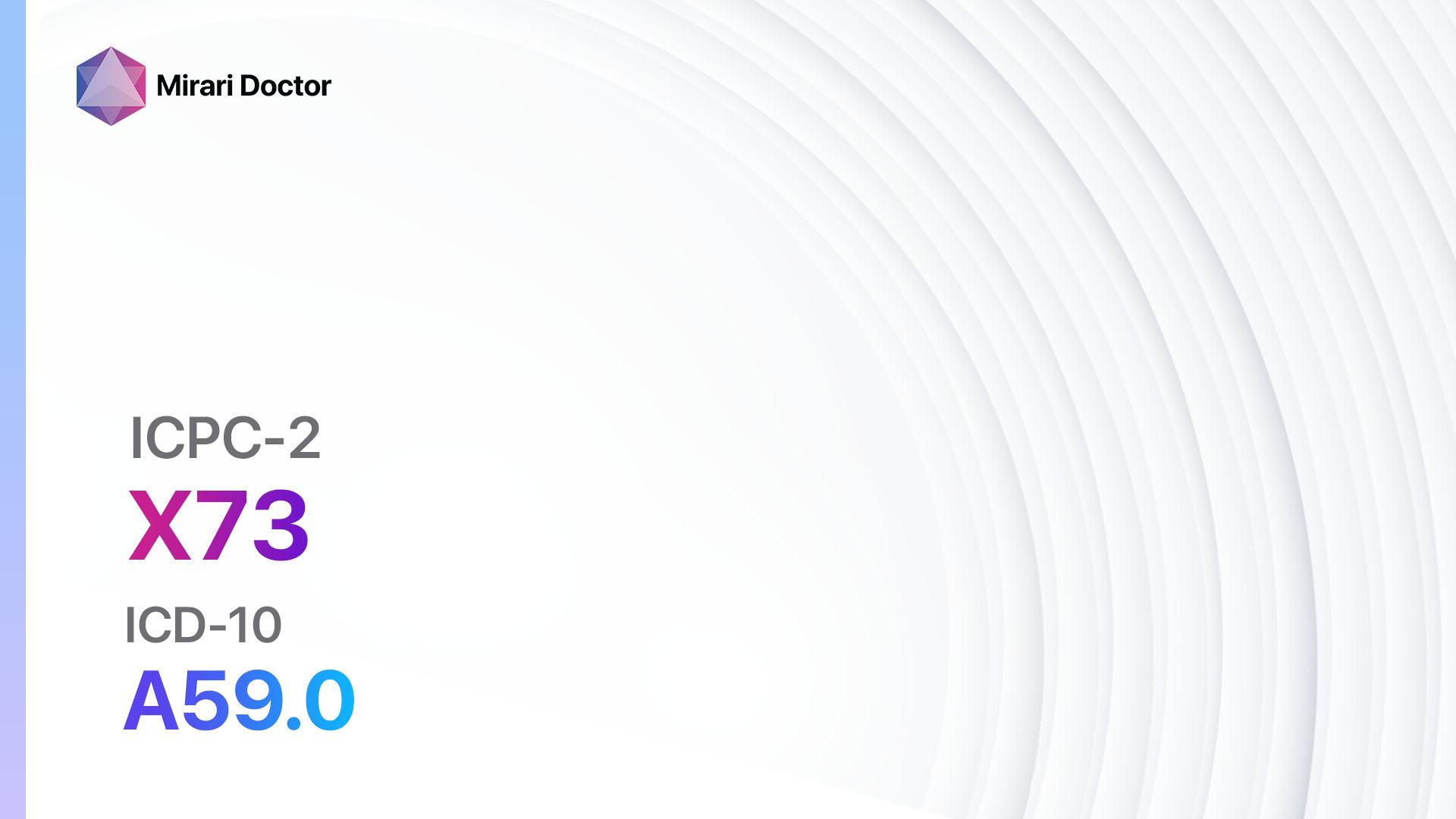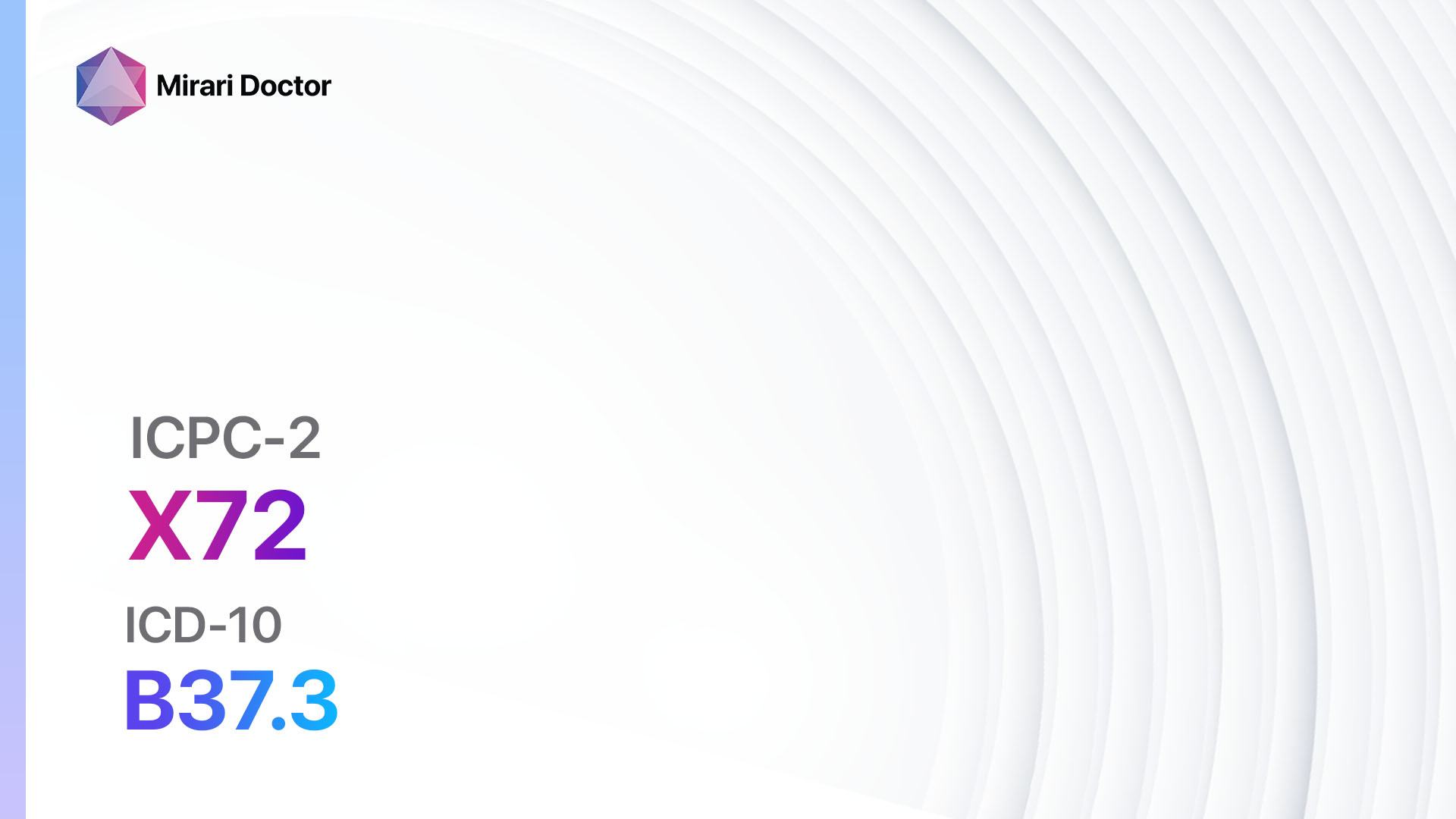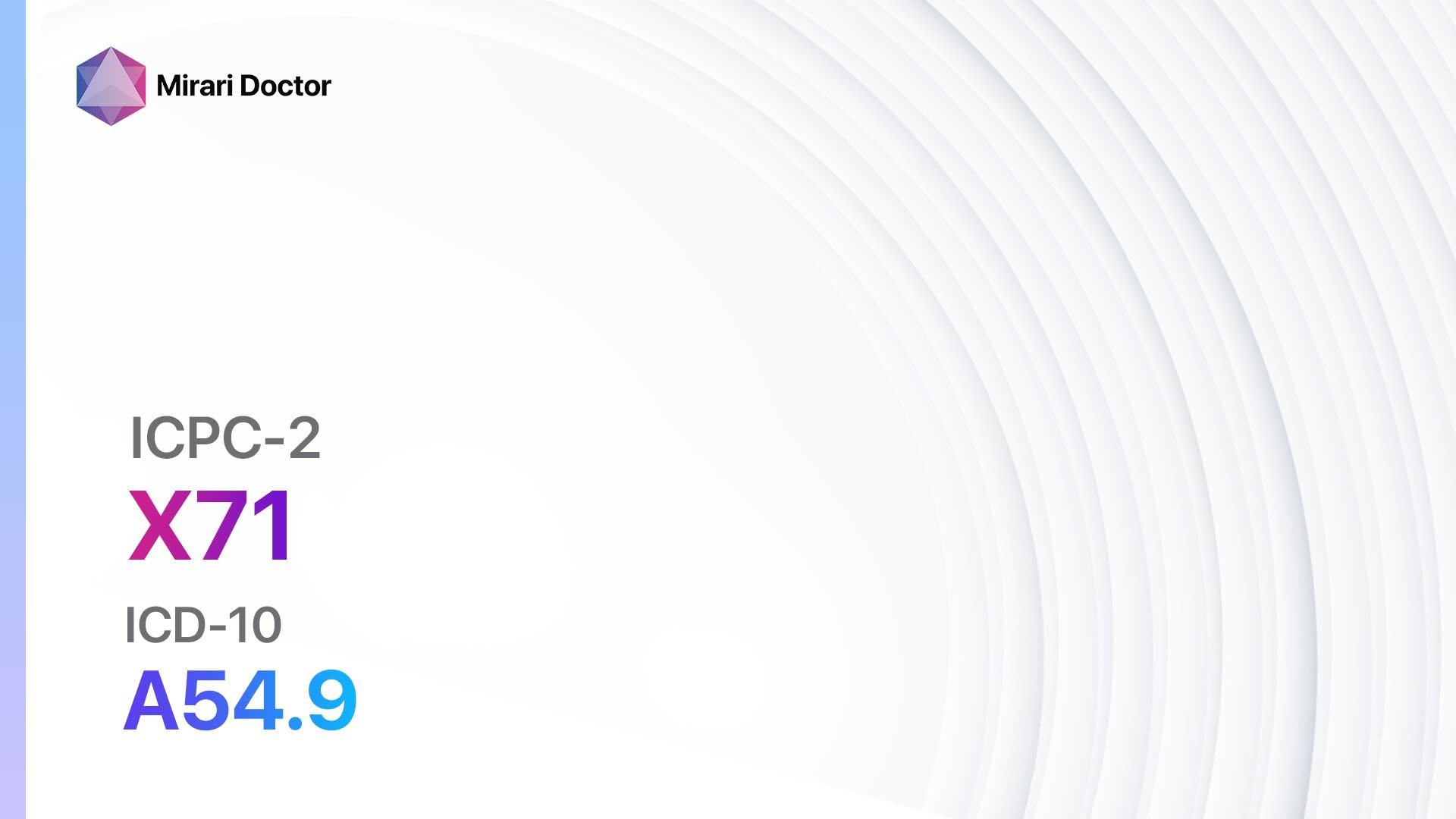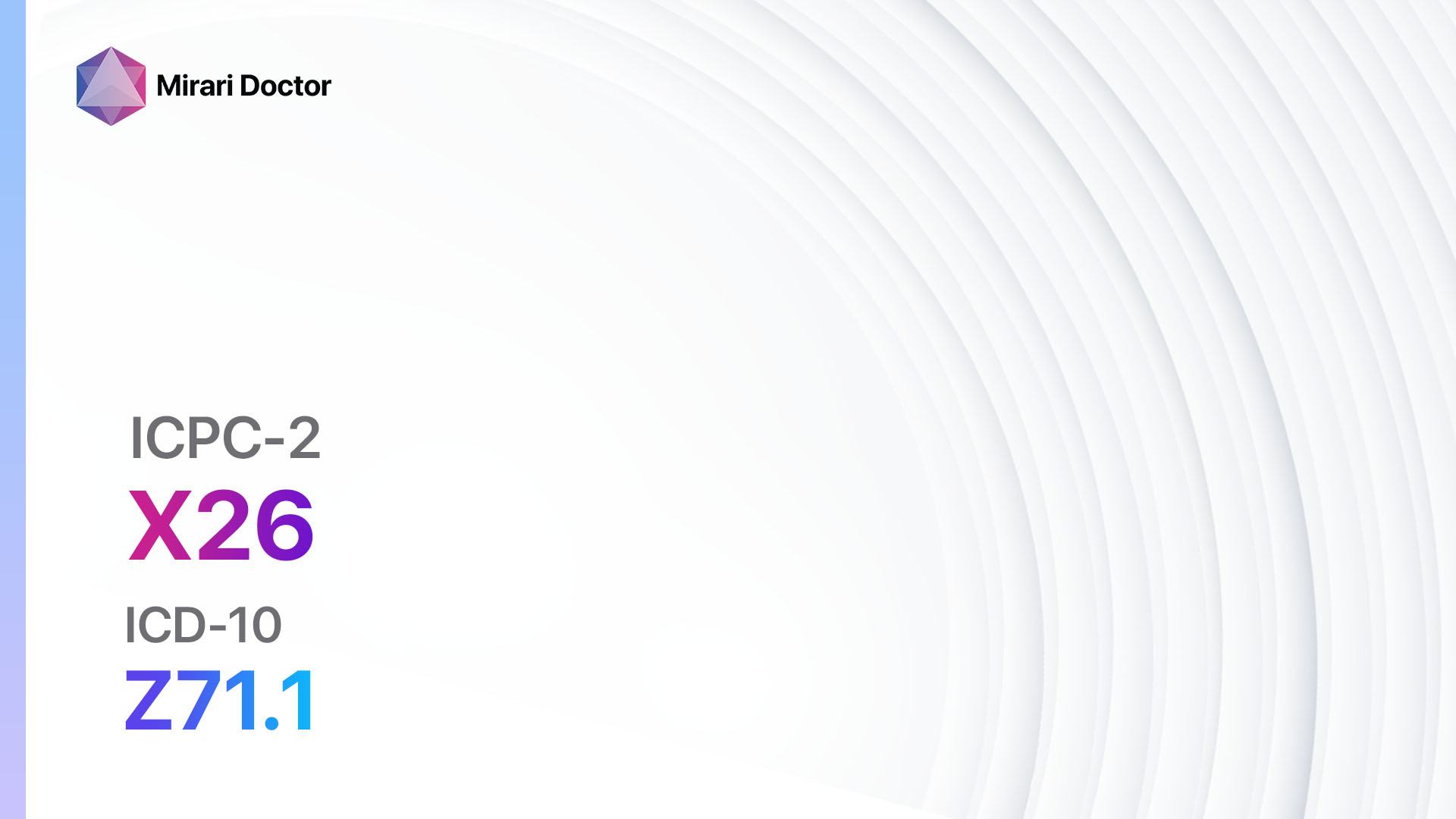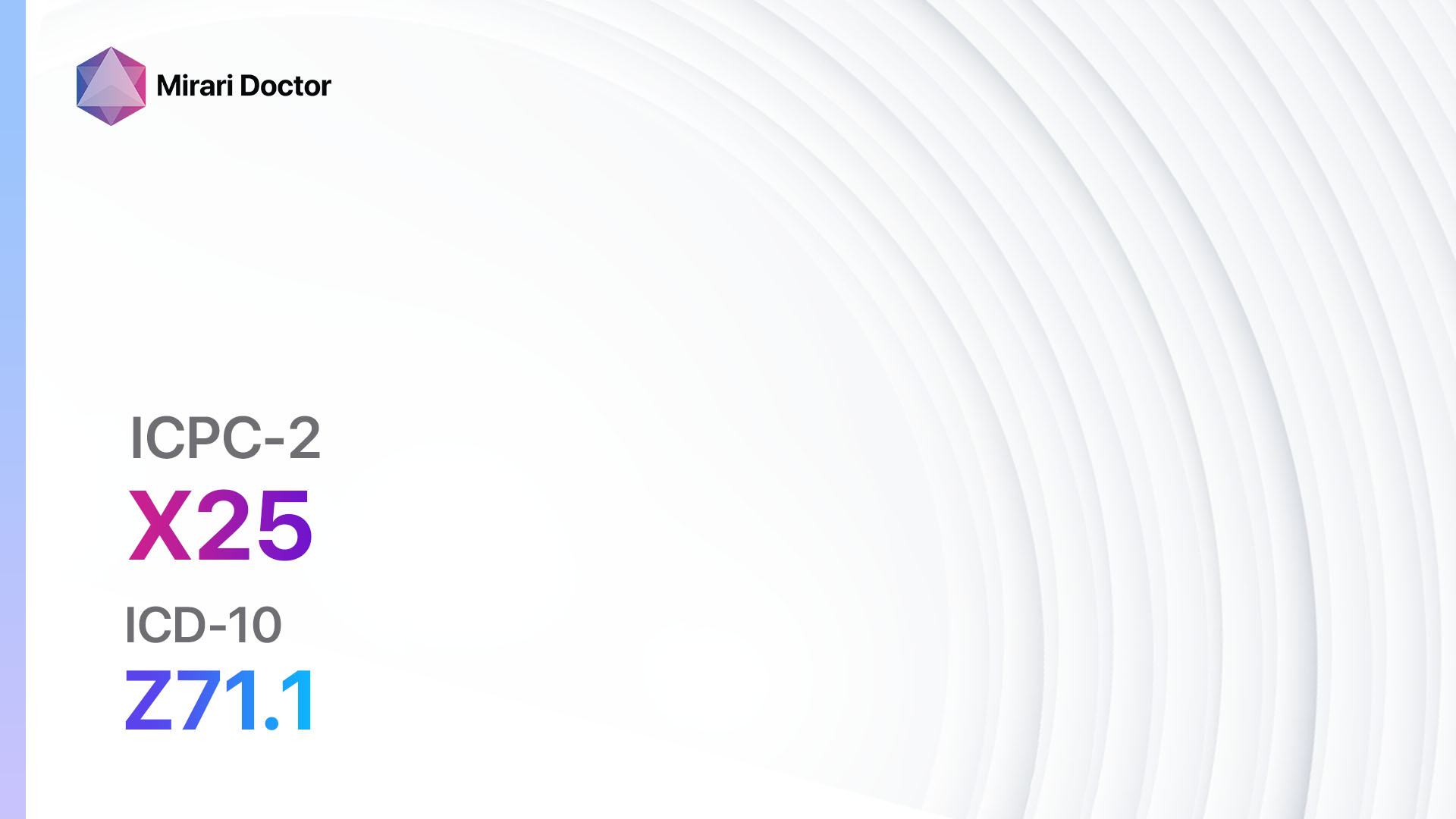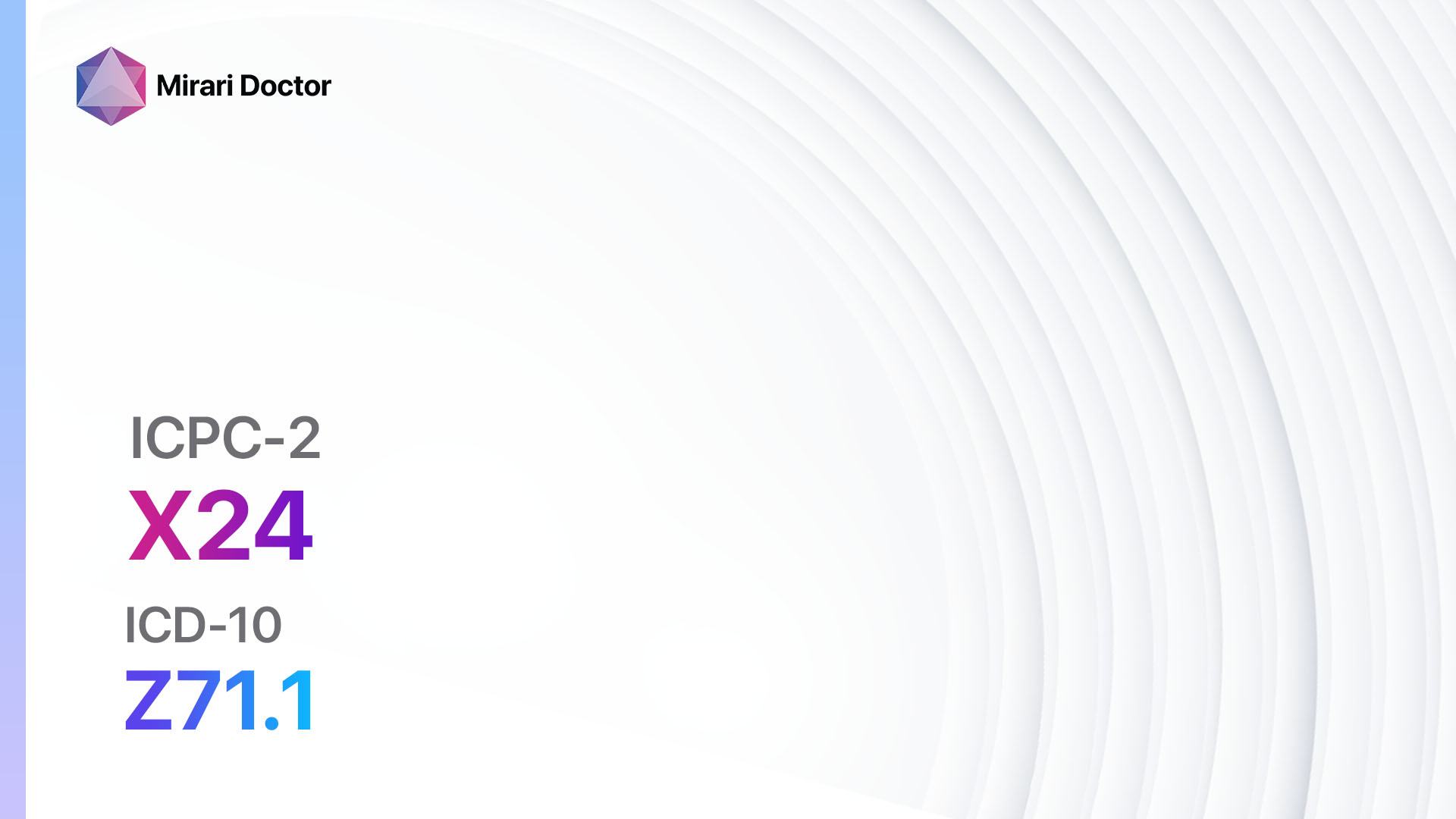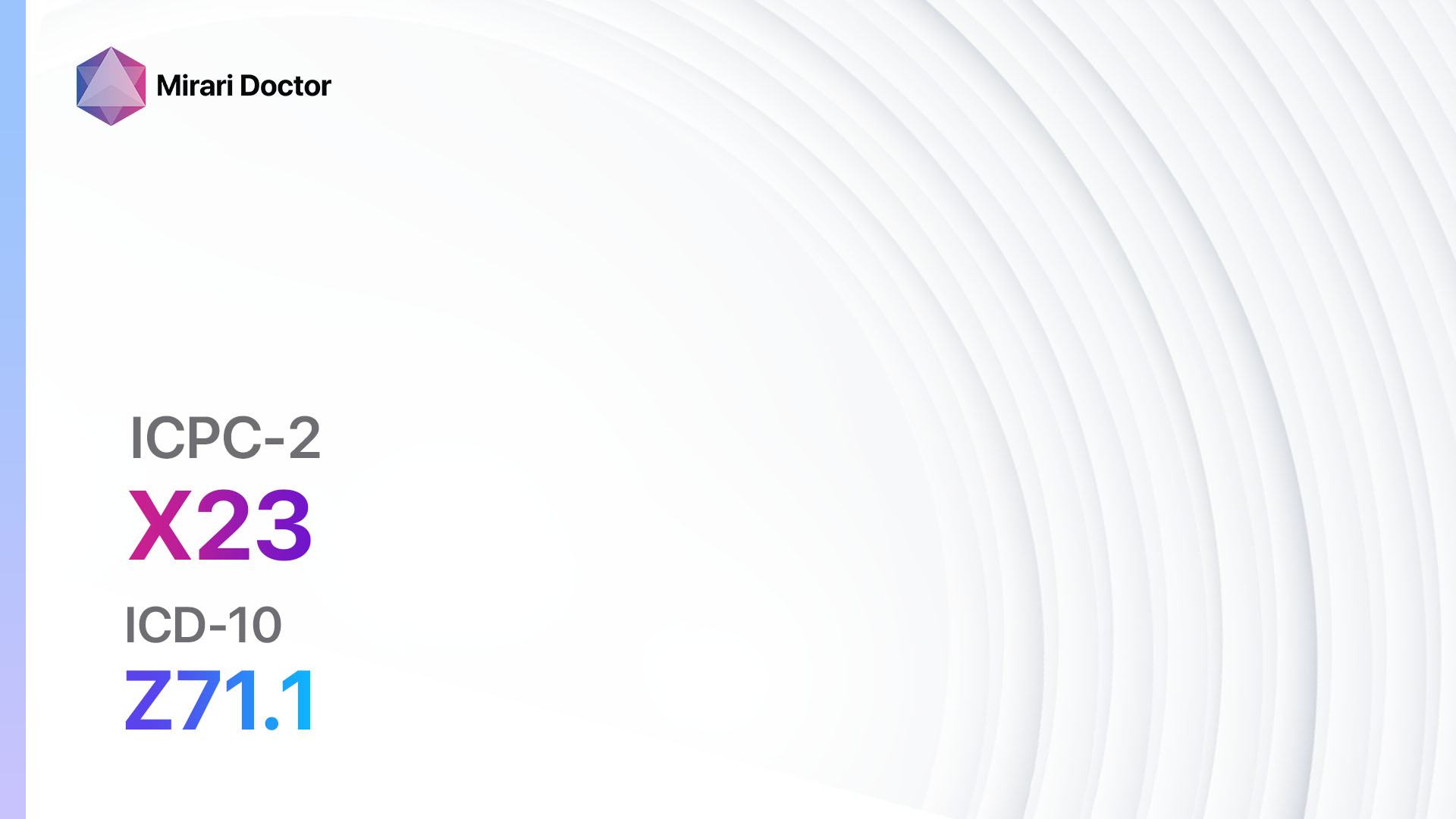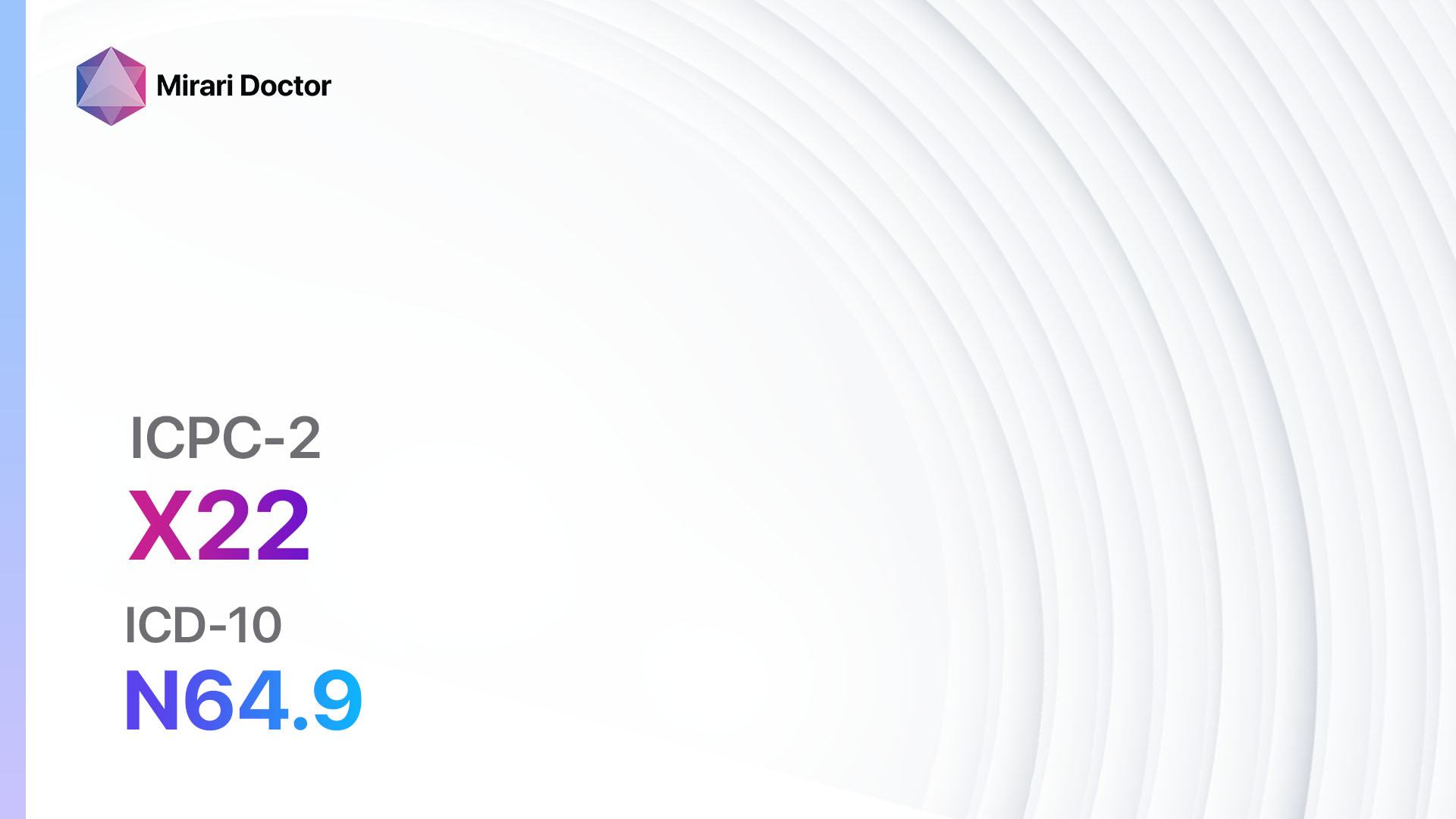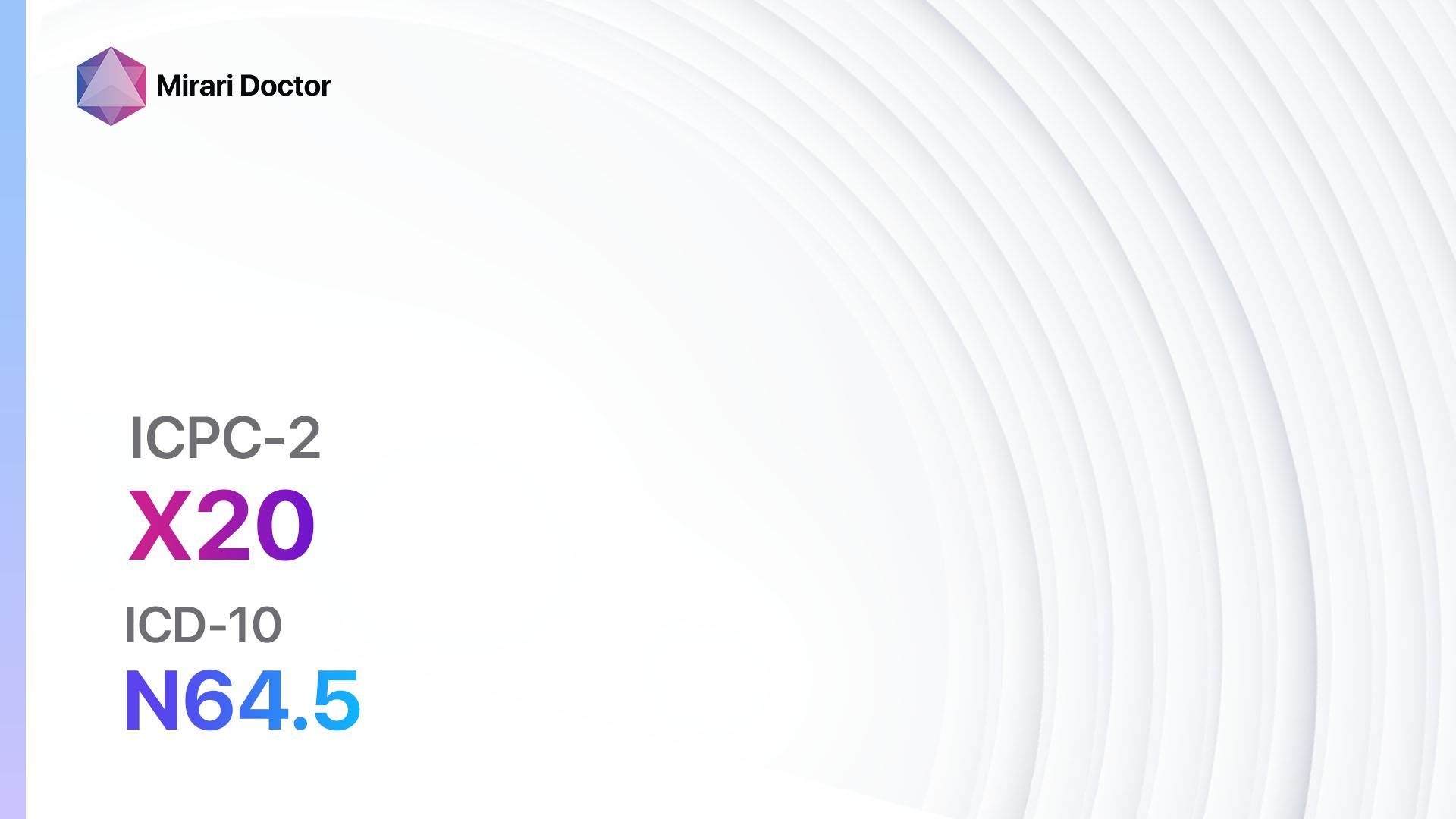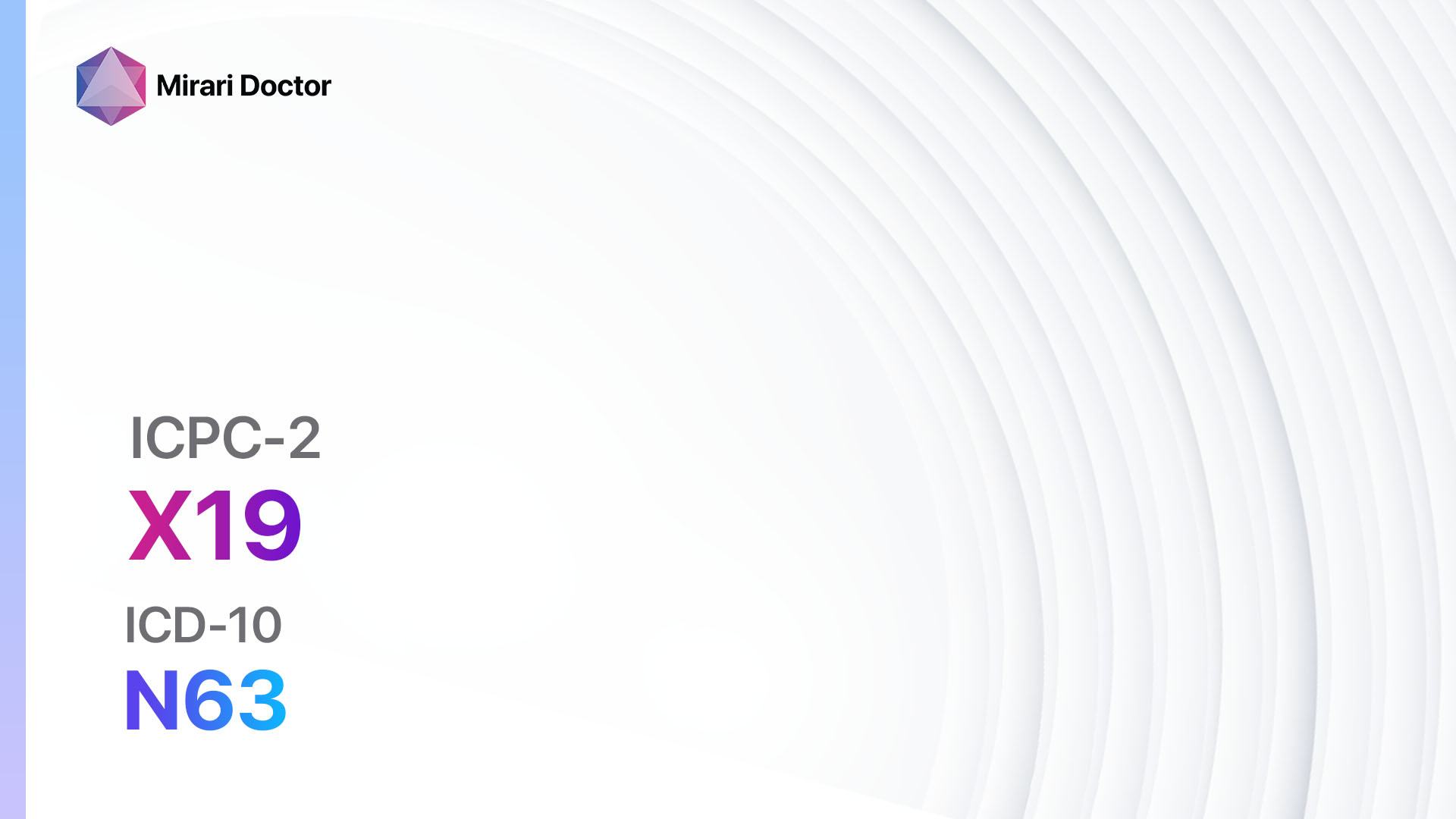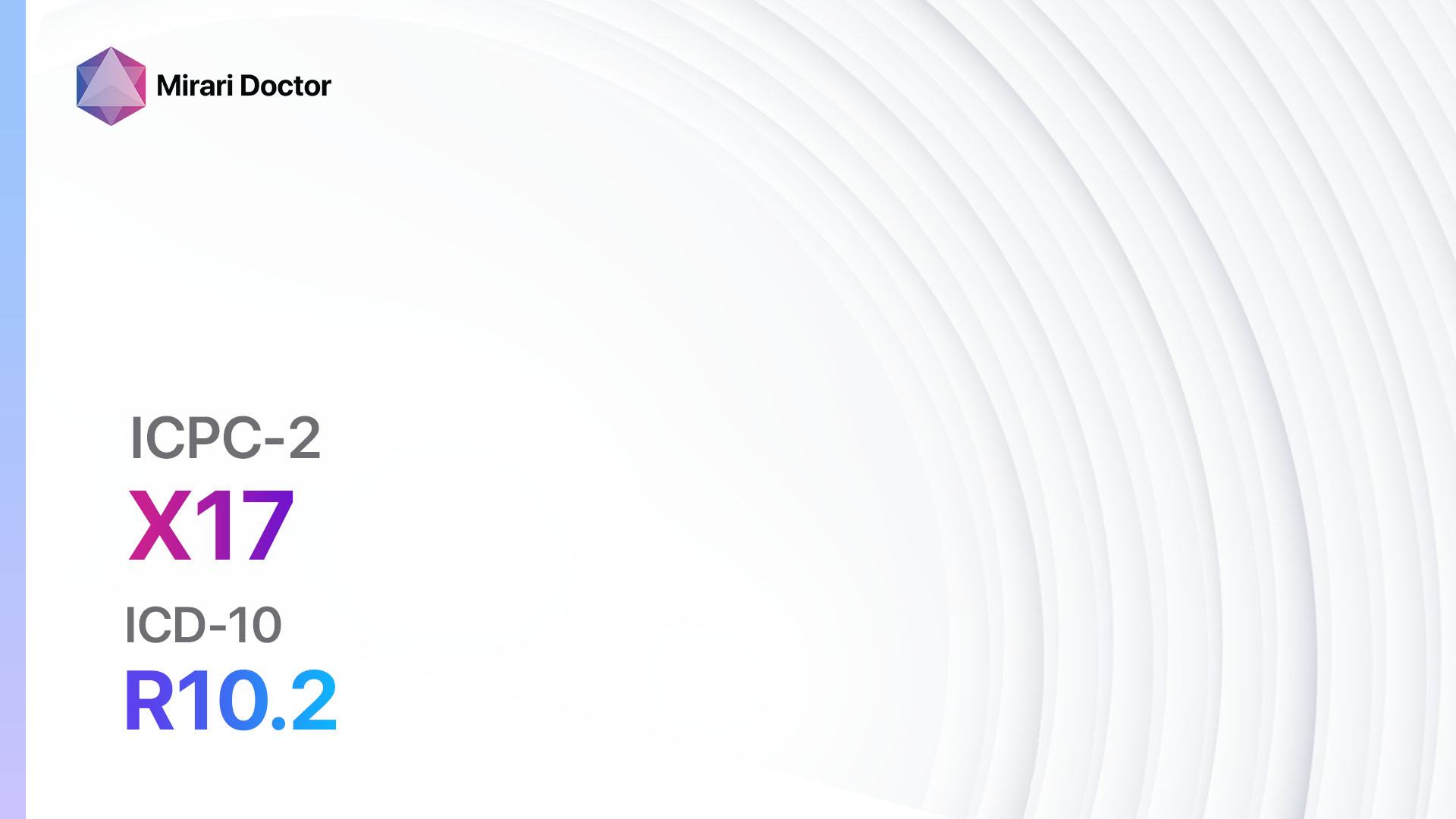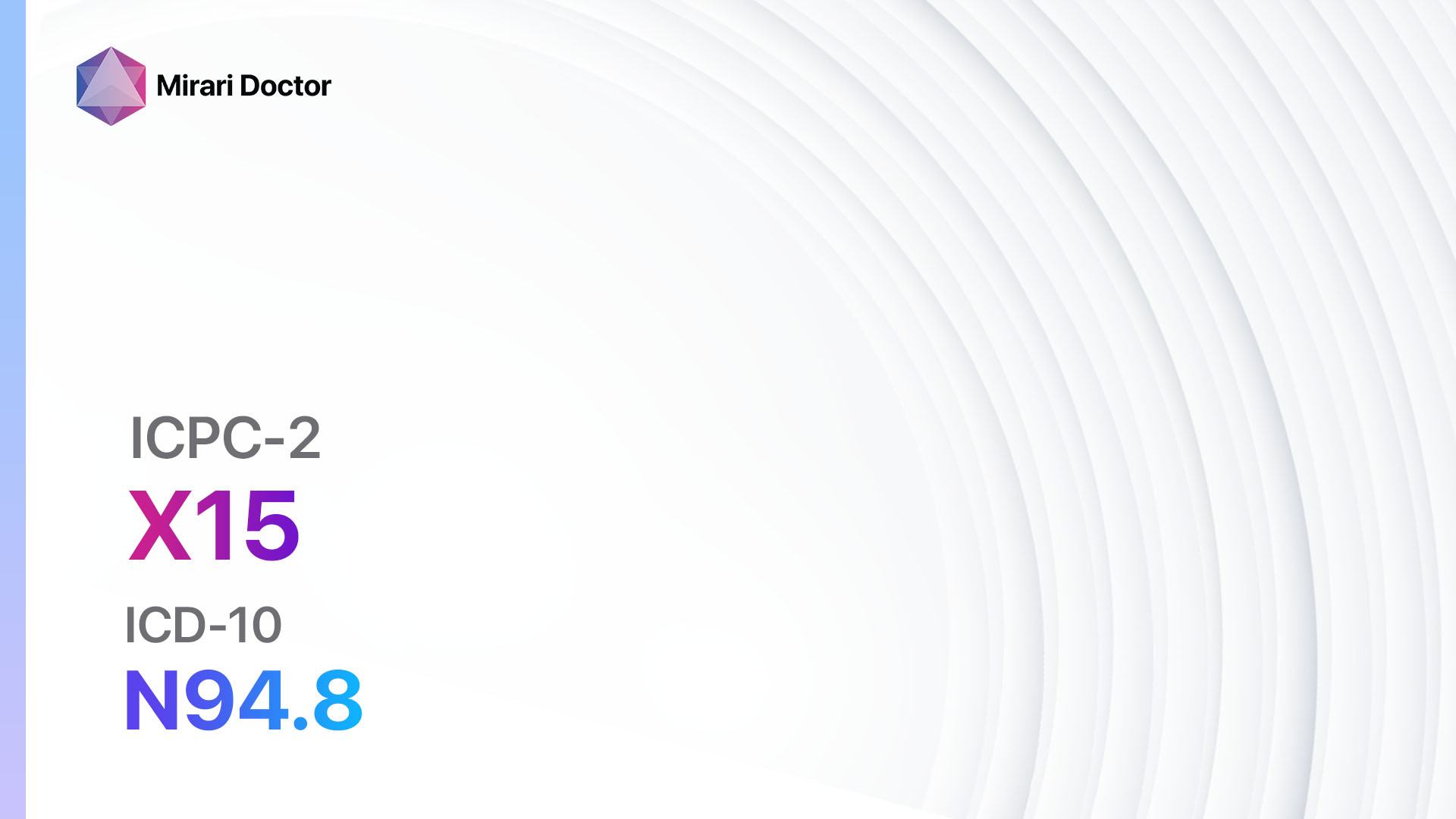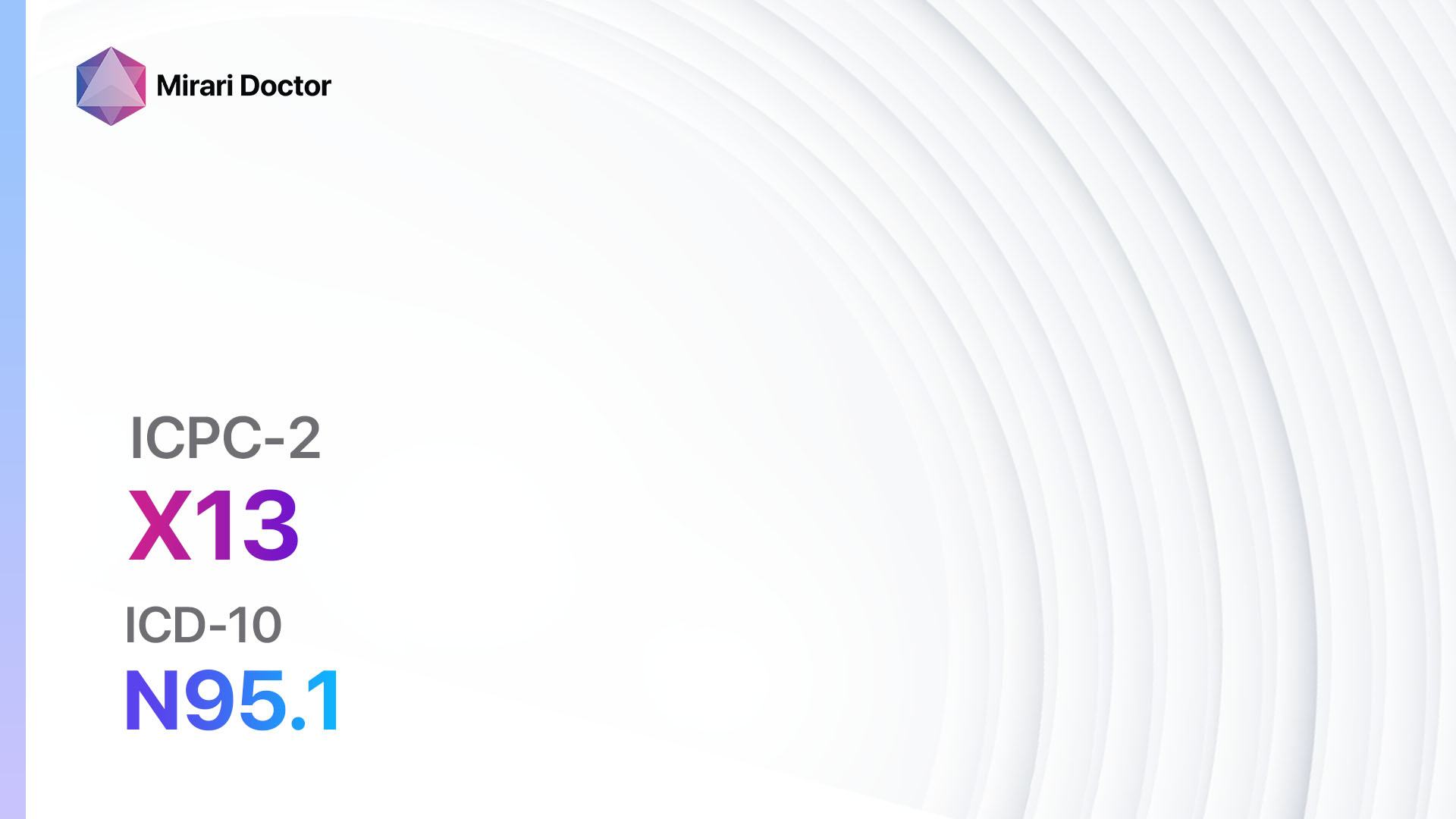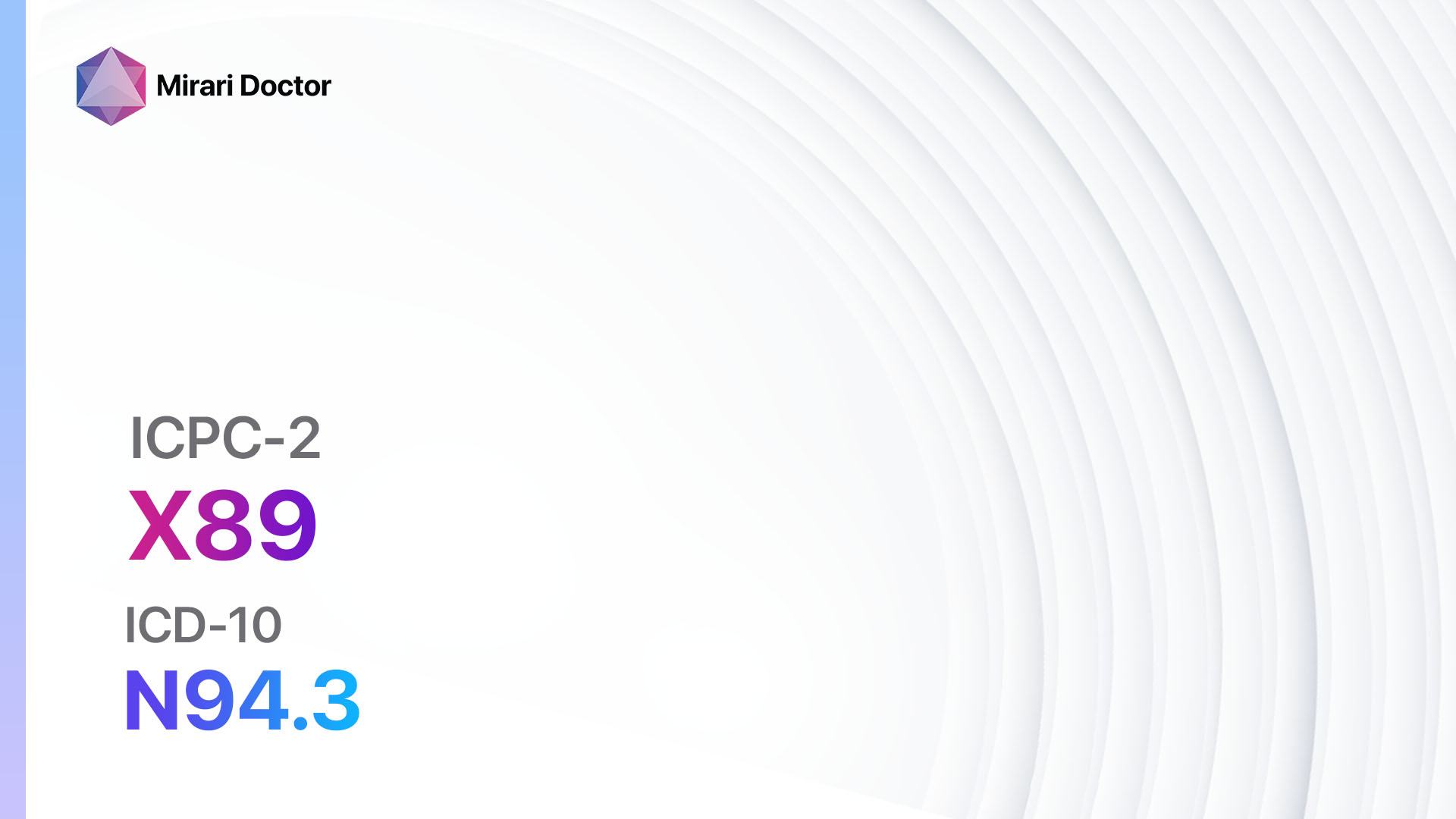
Introduction
Premenstrual tension syndrome (PMTS), also known as premenstrual syndrome (PMS), is a common condition that affects women of reproductive age. It refers to a combination of physical, emotional, and behavioral symptoms that occur in the luteal phase of the menstrual cycle, typically starting 1-2 weeks before menstruation and resolving with the onset of menses.[1]PMTS can significantly impact a woman’s quality of life and may require medical intervention. This guide aims to provide healthcare professionals with a comprehensive approach to diagnosing and managing PMTS.
Codes
Symptoms
- Mood swings: Women with PMTS may experience irritability, mood swings, and increased sensitivity to emotional stimuli.[2]
- Fatigue: Fatigue and lack of energy are common symptoms of PMTS.[3]
- Breast tenderness: Many women experience breast tenderness or swelling during the luteal phase.[4]
- Abdominal bloating: Abdominal bloating and water retention are common symptoms of PMTS.[5]
- Headaches: Some women may experience headaches or migraines during the luteal phase.[6]
- Food cravings: Cravings for certain types of food, especially sweets or salty snacks, may occur in women with PMTS.[7]
- Sleep disturbances: Insomnia or excessive sleepiness may be present in women with PMTS.[8]
- Anxiety and depression: Some women may experience increased anxiety or symptoms of depression during the luteal phase.[9]
Causes
The exact cause of PMTS is unknown, but several factors may contribute to its development:
- Hormonal changes: Fluctuations in estrogen and progesterone levels during the menstrual cycle are thought to play a role in PMTS[10].
- Serotonin imbalance: Changes in serotonin levels in the brain may contribute to the development of PMTS symptoms.
- Genetic predisposition: Some women may have a genetic predisposition to developing PMTS.
- Environmental factors: Stress, lack of exercise, and poor diet may exacerbate PMTS symptoms.
Diagnostic Steps
Medical History
- Obtain a detailed medical history, including the onset, duration, and severity of symptoms.
- Ask about the presence of any underlying medical conditions or medications that may contribute to PMTS symptoms.
- Assess the impact of symptoms on the patient’s daily life and relationships.
Physical Examination
- Perform a thorough physical examination, including a breast examination to assess for tenderness or swelling.
- Evaluate the patient’s overall health and rule out any underlying medical conditions that may mimic PMTS symptoms.
Laboratory Tests
- There are no specific laboratory tests to diagnose PMTS. However, certain tests may be performed to rule out other medical conditions that may present with similar symptoms, such as thyroid dysfunction or anemia.
Diagnostic Imaging
- Diagnostic imaging is not typically necessary for the diagnosis of PMTS. However, in cases where there is suspicion of an underlying structural abnormality, such as ovarian cysts, ultrasound may be performed.
Other Tests
- In some cases, a symptom diary may be helpful in tracking the timing and severity of symptoms over several menstrual cycles.
- Psychological assessments, such as the Beck Depression Inventory or the Hamilton Anxiety Rating Scale, may be used to evaluate the presence and severity of mood symptoms.
Follow-up and Patient Education
- Schedule regular follow-up appointments to monitor symptom progression and treatment effectiveness.
- Provide patient education on lifestyle modifications, self-care strategies, and available treatment options.
Possible Interventions
Traditional Interventions
Medications:
Top 5 drugs for Premenstrual tension syndrome:
- Selective serotonin reuptake inhibitors (SSRIs) (e.g., Fluoxetine, Sertraline):
- Cost: Generic versions can be $10-$50/month.
- Contraindications: Hypersensitivity to SSRIs, concomitant use of monoamine oxidase inhibitors (MAOIs).
- Side effects: Nausea, headache, insomnia.
- Severe side effects: Serotonin syndrome, suicidal thoughts.
- Drug interactions: MAOIs, other serotonergic drugs.
- Warning: May take several weeks to achieve full therapeutic effect.
- Nonsteroidal anti-inflammatory drugs (NSAIDs) (e.g., Ibuprofen, Naproxen):
- Cost: Generic versions are typically <$10/month.
- Contraindications: Active peptic ulcer disease, history of gastrointestinal bleeding.
- Side effects: Upset stomach, heartburn.
- Severe side effects: Gastrointestinal bleeding, kidney damage.
- Drug interactions: Anticoagulants, other NSAIDs.
- Warning: Long-term use may increase the risk of cardiovascular events.
- Oral contraceptives (e.g., Ethinyl estradiol and drospirenone, Levonorgestrel and ethinyl estradiol):
- Cost: Generic versions can be $10-$50/month.
- Contraindications: History of blood clots, smoking in women over 35 years old.
- Side effects: Nausea, breast tenderness.
- Severe side effects: Blood clots, stroke.
- Drug interactions: Antiepileptic drugs, antibiotics.
- Warning: Regular monitoring of blood pressure and cholesterol levels is recommended.
- Diuretics (e.g., Spironolactone):
- Cost: Generic versions can be $10-$50/month.
- Contraindications: Hyperkalemia, anuria.
- Side effects: Increased urination, dizziness.
- Severe side effects: Electrolyte imbalance, kidney damage.
- Drug interactions: ACE inhibitors, potassium supplements.
- Warning: Regular monitoring of electrolyte levels is recommended.
- Benzodiazepines (e.g., Alprazolam, Lorazepam):
- Cost: Generic versions can be $10-$50/month.
- Contraindications: Acute narrow-angle glaucoma, respiratory insufficiency.
- Side effects: Drowsiness, dizziness.
- Severe side effects: Respiratory depression, dependence.
- Drug interactions: Opioids, alcohol.
- Warning: Long-term use may lead to tolerance and dependence.
Alternative Drugs:
- Calcium supplements: May help reduce symptoms of PMTS, particularly mood symptoms.
- Vitamin B6: Some studies suggest that vitamin B6 supplementation may alleviate PMTS symptoms.
- Magnesium: May help reduce symptoms of PMTS, including bloating and breast tenderness.
- Herbal supplements: Certain herbal supplements, such as chasteberry and evening primrose oil, have been used to alleviate PMTS symptoms. However, their efficacy is not well-established.
Surgical Procedures:
Surgical interventions are not typically indicated for the management of PMTS.
Alternative Interventions
- Exercise: Regular physical activity, such as aerobic exercise or yoga, may help alleviate PMTS symptoms. Cost: Varies (e.g., gym membership, yoga classes).
- Dietary modifications: A balanced diet rich in fruits, vegetables, whole grains, and lean proteins may help reduce PMTS symptoms. Cost: Varies depending on food choices.
- Stress management techniques: Stress reduction techniques, such as mindfulness meditation or deep breathing exercises, may help alleviate PMTS symptoms. Cost: Varies (e.g., meditation apps, yoga classes).
- Acupuncture: Some studies suggest that acupuncture may help reduce PMTS symptoms. Cost: $60-$120 per session.
- Cognitive-behavioral therapy (CBT): CBT may be beneficial for women with severe PMTS symptoms, particularly those with significant mood disturbances. Cost: Varies depending on therapist fees and insurance coverage.
Lifestyle Interventions
- Ensure adequate sleep: Getting enough sleep and maintaining a regular sleep schedule may help alleviate PMTS symptoms. Cost: None.
- Stress reduction: Engaging in stress-reducing activities, such as listening to music or practicing relaxation techniques, may help manage PMTS symptoms. Cost: None.
- Limit caffeine and alcohol intake: Caffeine and alcohol consumption may exacerbate PMTS symptoms. Limiting or avoiding these substances may be beneficial. Cost: None.
- Healthy diet: Eating a balanced diet that includes whole grains, fruits, vegetables, and lean proteins may help alleviate PMTS symptoms. Cost: Varies depending on food choices.
- Regular exercise: Engaging in regular physical activity, such as walking or swimming, may help reduce PMTS symptoms. Cost: Varies (e.g., gym membership, exercise equipment).
It is important to note that the cost ranges provided are approximate and may vary depending on the location and availability of the interventions.
Mirari Cold Plasma Alternative Intervention
Understanding Mirari Cold Plasma
- Safe and Non-Invasive Treatment: Mirari Cold Plasma is a safe and non-invasive treatment option for various skin conditions. It does not require incisions, minimizing the risk of scarring, bleeding, or tissue damage.
- Efficient Extraction of Foreign Bodies: Mirari Cold Plasma facilitates the removal of foreign bodies from the skin by degrading and dissociating organic matter, allowing easier access and extraction.
- Pain Reduction and Comfort: Mirari Cold Plasma has a local analgesic effect, providing pain relief during the treatment, making it more comfortable for the patient.
- Reduced Risk of Infection: Mirari Cold Plasma has antimicrobial properties, effectively killing bacteria and reducing the risk of infection.
- Accelerated Healing and Minimal Scarring: Mirari Cold Plasma stimulates wound healing and tissue regeneration, reducing healing time and minimizing the formation of scars.
Mirari Cold Plasma Prescription
Video instructions for using Mirari Cold Plasma Device – X89 Premenstrual tension syndrome (ICD-10:N94.3)
| Mild | Moderate | Severe |
| Mode setting: 2 (Wound Healing) Location: 2 (Prostate & Uterus) Morning: 15 minutes, Evening: 15 minutes | Mode setting: 2 (Wound Healing) Location: 2 (Prostate & Uterus) Morning: 30 minutes, Lunch: 30 minutes, Evening: 30 minutes | Mode setting: 2 (Wound Healing) Location: 2 (Prostate & Uterus) Morning: 30 minutes, Lunch: 30 minutes, Evening: 30 minutes |
| Mode setting: 7 (Immunotherapy) Location: 1 (Sacrum) Morning: 15 minutes, Evening: 15 minutes | Mode setting: 7 (Immunotherapy) Location: 1 (Sacrum) Morning: 30 minutes, Lunch: 30 minutes, Evening: 30 minutes | Mode setting: 7 (Immunotherapy) Location: 1 (Sacrum) Morning: 30 minutes, Lunch: 30 minutes, Evening: 30 minutes |
| Modesetting:2 (Wound Healing) Location:0 (Localized) Morning:15 minutes, Evening:15minutes | Modesetting:2 (Wound Healing) Location:0 (Localized) Morning:30 minutes, Lunch:30 minutes, Evening:30 minutes | Modesetting:2 (Wound Healing) Location:0 (Localized) Morning:30 minutes, Lunch:30 minutes, Evening:30 minutes |
| Total Morning:45minutesapprox.$7.50USD, Evening:45minutesapprox.$7.50USD | Total Morning:90minutesapprox.$15USD, Lunch:90minutesapprox. $15 USD, Evening:90minutesapprox. $15 USD, | Total Morning:90minutesapprox.$15USD, Lunch:90minutesapprox. $15 USD, Evening:90minutesapprox. $15 USD, |
| Usualtreatmentfor7-60daysapprox.$105USD–$900USD | Usualtreatmentfor6-8weeksapprox.$1,890USD–$2,520USD | Usualtreatmentfor3-6monthsapprox.$4,050USD–$8,100USD |
 |
|
Use the Mirari Cold Plasma device to treat Premenstrual tension syndrome effectively.
WARNING: MIRARI COLD PLASMA IS DESIGNED FOR THE HUMAN BODY WITHOUT ANY ARTIFICIAL OR THIRD PARTY PRODUCTS. USE OF OTHER PRODUCTS IN COMBINATION WITH MIRARI COLD PLASMA MAY CAUSE UNPREDICTABLE EFFECTS, HARM OR INJURY. PLEASE CONSULT A MEDICAL PROFESSIONAL BEFORE COMBINING ANY OTHER PRODUCTS WITH USE OF MIRARI.
Step 1: Cleanse the Skin
- Start by cleaning the affected area of the skin with a gentle cleanser or mild soap and water. Gently pat the area dry with a clean towel.
Step 2: Prepare the Mirari Cold Plasma device
- Ensure that the Mirari Cold Plasma device is fully charged or has fresh batteries as per the manufacturer’s instructions. Make sure the device is clean and in good working condition.
- Switch on the Mirari device using the power button or by following the specific instructions provided with the device.
- Some Mirari devices may have adjustable settings for intensity or treatment duration. Follow the manufacturer’s instructions to select the appropriate settings based on your needs and the recommended guidelines.
Step 3: Apply the Device
- Place the Mirari device in direct contact with the affected area of the skin. Gently glide or hold the device over the skin surface, ensuring even coverage of the area experiencing.
- Slowly move the Mirari device in a circular motion or follow a specific pattern as indicated in the user manual. This helps ensure thorough treatment coverage.
Step 4: Monitor and Assess:
- Keep track of your progress and evaluate the effectiveness of the Mirari device in managing your Premenstrual tension syndrome. If you have any concerns or notice any adverse reactions, consult with your health care professional.
Note
This guide is for informational purposes only and should not replace the advice of a medical professional. Always consult with your healthcare provider or a qualified medical professional for personal advice, diagnosis, or treatment. Do not solely rely on the information presented here for decisions about your health. Use of this information is at your own risk. The authors of this guide, nor any associated entities or platforms, are not responsible for any potential adverse effects or outcomes based on the content.
Mirari Cold Plasma System Disclaimer
- Purpose: The Mirari Cold Plasma System is a Class 2 medical device designed for use by trained healthcare professionals. It is registered for use in Thailand and Vietnam. It is not intended for use outside of these locations.
- Informational Use: The content and information provided with the device are for educational and informational purposes only. They are not a substitute for professional medical advice or care.
- Variable Outcomes: While the device is approved for specific uses, individual outcomes can differ. We do not assert or guarantee specific medical outcomes.
- Consultation: Prior to utilizing the device or making decisions based on its content, it is essential to consult with a Certified Mirari Tele-Therapist and your medical healthcare provider regarding specific protocols.
- Liability: By using this device, users are acknowledging and accepting all potential risks. Neither the manufacturer nor the distributor will be held accountable for any adverse reactions, injuries, or damages stemming from its use.
- Geographical Availability: This device has received approval for designated purposes by the Thai and Vietnam FDA. As of now, outside of Thailand and Vietnam, the Mirari Cold Plasma System is not available for purchase or use.
References
- American College of Obstetricians and Gynecologists. (2015). Premenstrual syndrome (PMS). ACOG Practice Bulletin No. 15. Obstetrics & Gynecology, 126(3), e52-e64.
- Yonkers, K. A., O’Brien, P. M. S., & Eriksson, E. (2008). Premenstrual syndrome. The Lancet, 371(9619), 1200-1210.
- Steiner, M., Macdougall, M., & Brown, E. (2003). The premenstrual symptoms screening tool (PSST) for clinicians. Archives of Women’s Mental Health, 6(3), 203-209.
- Rapkin, A. J., & Akopians, A. L. (2012). Pathophysiology of premenstrual syndrome and premenstrual dysphoric disorder. Menopause International, 18(2), 52-59.
- Freeman, E. W. (2003). Premenstrual syndrome and premenstrual dysphoric disorder: definitions and diagnosis. Psychoneuroendocrinology, 28, 25-37.
- MacGregor, E. A. (2007). Menstrual migraine: a clinical review. Journal of Family Planning and Reproductive Health Care, 33(1), 36-47.
- Dye, L., & Blundell, J. E. (1997). Menstrual cycle and appetite control: implications for weight regulation. Human Reproduction, 12(6), 1142-1151.
- Baker, F. C., & Driver, H. S. (2007). Circadian rhythms, sleep, and the menstrual cycle. Sleep Medicine, 8(6), 613-622.
- Pearlstein, T., & Steiner, M. (2008). Premenstrual dysphoric disorder: burden of illness and treatment update. Journal of Psychiatry and Neuroscience, 33(4), 291-301.
- Halbreich, U. (2003). The etiology, biology, and evolving pathology of premenstrual syndromes. Psychoneuroendocrinology, 28, 55-99.
Related articles
Made in USA


